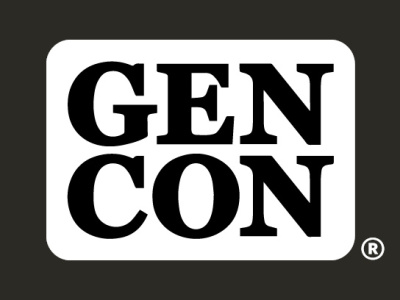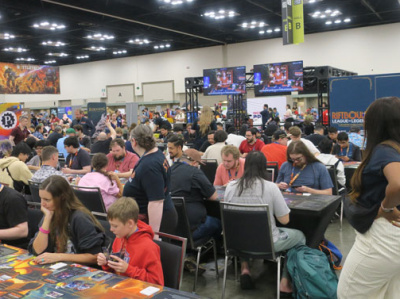 Talk the Talk, Walk the Walk is a weekly column by Kendall Swafford of Up Up Away! in Cincinnati, Ohio. This week, Kendall looks at the difference between his numbers for comic sales in his store and the reported sell-in numbers.
Talk the Talk, Walk the Walk is a weekly column by Kendall Swafford of Up Up Away! in Cincinnati, Ohio. This week, Kendall looks at the difference between his numbers for comic sales in his store and the reported sell-in numbers.This past Wednesday, John Mayo issued his monthly sales estimates for September of 2010, which featured a 14% drop in unit sales vs. September 2009. What I wanted to discuss was the 15-point gap in market share between Marvel and DC in unit sales, and how my mileage varies. Time and space willing, we’ll also look at dollar sales, but with the average selling price of a comic book being a moving target, let’s focus first on unit sales.
*Pardon the interruption* One opinion I’d like to offer regarding recent announcements of price rollbacks. I was stunned to read retailers complaining of the loss of revenue due to price rollbacks. SERIOUSLY!? We collectively complain that $3.99 is too much for a comic book, DC actually listens to us and acts accordingly, and now you’re mad about the decrease in revenue!? I can’t fathom the logic in this argument. Based on this point-of-view, your logic assumes the position that you as a retailer are better off with the $3.99 price point, while completely disregarding the loss of volume that has gone hand-in-hand with these price increases. If I was DC, I’d have to wonder A) what the Hell it takes to make some retailers happy and B) “why did we bother?”
Back to our regularly scheduled programming. Looking at my Top 20 list for September, DC takes spots 1-9, with Marvel’s New Avengers charting at #10, and Marvel taking all but one spot in #s 11-20. So DC very solidly has the top half of my Top 20, with Marvel taking the majority of the bottom half. My best seller for DC, Brightest Day #9 sold over twice what New Avengers #4 sold. Being lazy, I won’t look past the top 100, but DC took 50.9% of my top 100 unit sales vs. Marvel’s 41.3%, with Dark Horse a very distant third. Image only manages one title in my top 100, that of course being The Walking Dead. Obviously, if I were to expand my analysis to the top 300, Marvel & DC’s overall share numbers drop, but not relatively-speaking. DC still comes out on top in my store by a comfortable margin.
And that’s enough raw data to consider for now. I offer up these numbers to spark the dialogue that we really need to be having. How does your mileage differ? Would any or all of us be willing to supply these numbers to an independent source on a confidential basis, in order to gain some factual data about sell-through? Clearly, based on my one store’s data, Diamond’s sell-in numbers don’t tell the whole story.
A friend and colleague of mine was quick to point out that numbers are certainly going to vary by store, region etc., and he’s 100% right. I know of a store in my market that really craps on any comic the customer buys that the manager hates. Yeah, I’m a DC fan, but not to the point that I criticize customers for what they like. Hey, as long as they’re giving ME money, it’s all good, know what I mean? So we clearly can (and do) influence what sells in our stores. I would love to know if anyone else looks at the monthly charts and thinks “that doesn’t reflect MY store.” What I’m seeing is a WIDE disparity in the monthly charts vs. what I’m experiencing here on the ground, and that makes me question not the validity of the sell-in numbers, but their ultimate usefulness.
Parker: The Hunter was my best selling graphic novel last year by far. Why? Obviously, it’s good, but I’m a huge Darwyn Cooke fan, so I go out of my way to recommend it to the customers that I think should be reading it. This year’s sequel, Parker: The Outfit is no different. And my closest competitor (geographically-speaking) didn’t even carry it. Neither of us are right or wrong; he chose to do what he felt was right for his store, as did I. But what I’m talking about is not mere shading. I’m seeing wide gaps in information, and I think it’s time we found a way through it.
As we continue to mature as an industry, we have to find a way to develop more sophisticated analysis systems and outgrow our tendencies to fear a free exchange of sales data. The publishers’ continued reliance on sell-in rather than sell-through data is limiting at best, and causes decisions to be made based upon the wrong data. If an independent, impartial source could be found for collecting and analyzing sell-through data, why couldn’t we all participate anonymously? ICv2, John Mayo, JJ Miller and Brian Hibbs all do an incredible service to our industry in their respective data analyses, but sell-in data only gives us half the picture, at best. It’s a tall task, to put it mildly, but in our quest to move forward as an industry, it’s time we drop our respective veils and share information for the good of us all (and ICv2 would be happy to assemble it—ed.).
The opinions expressed in this column are solely those of the writer, and do not necessarily reflect the views of the editorial staff of ICv2.com.







